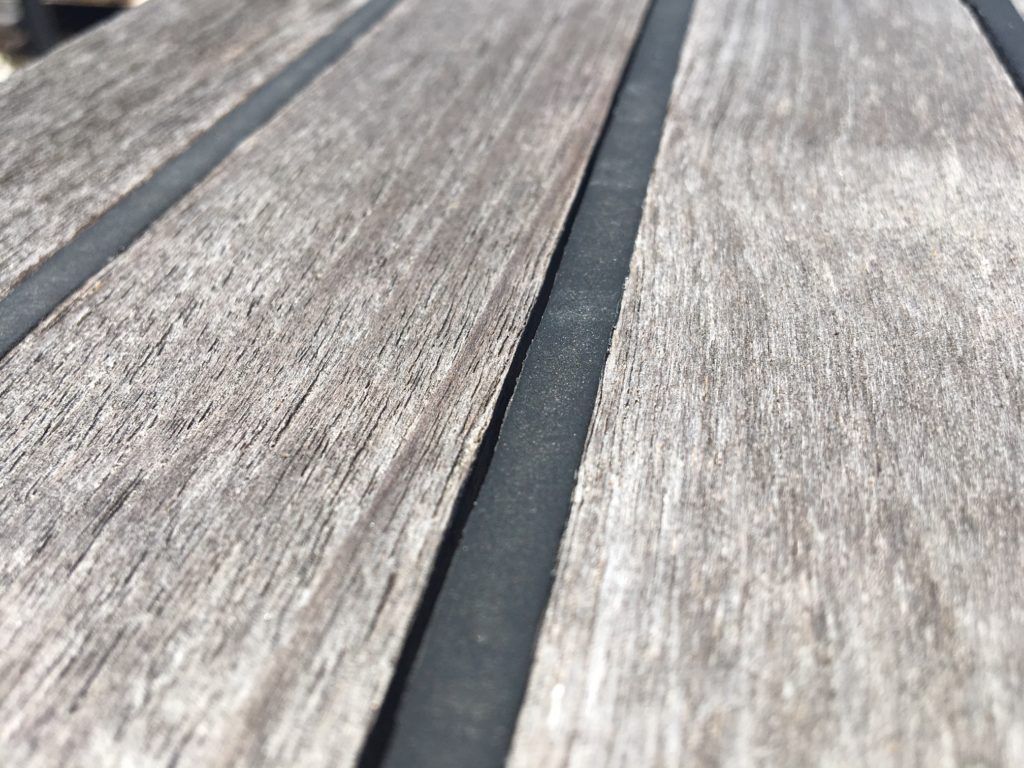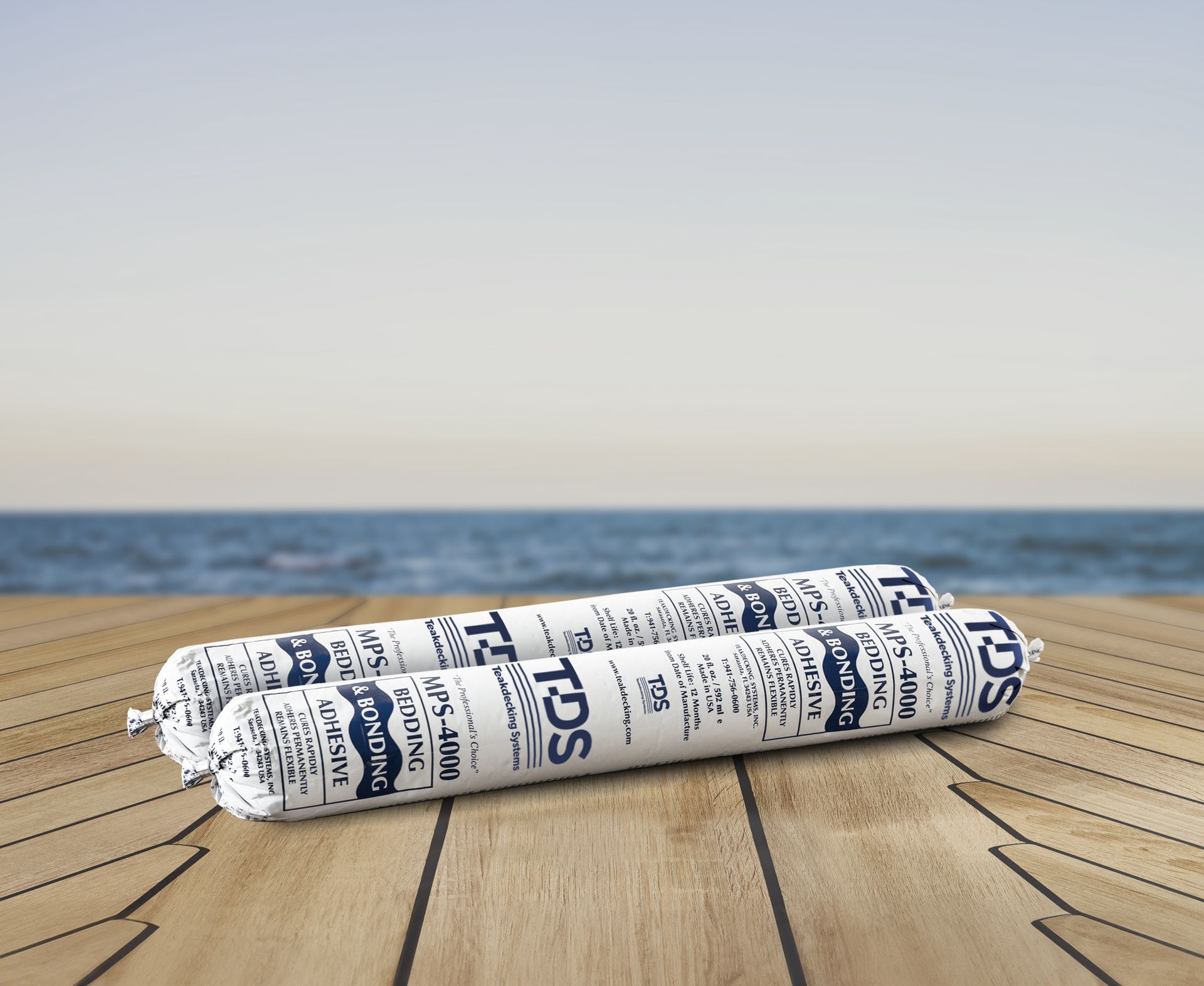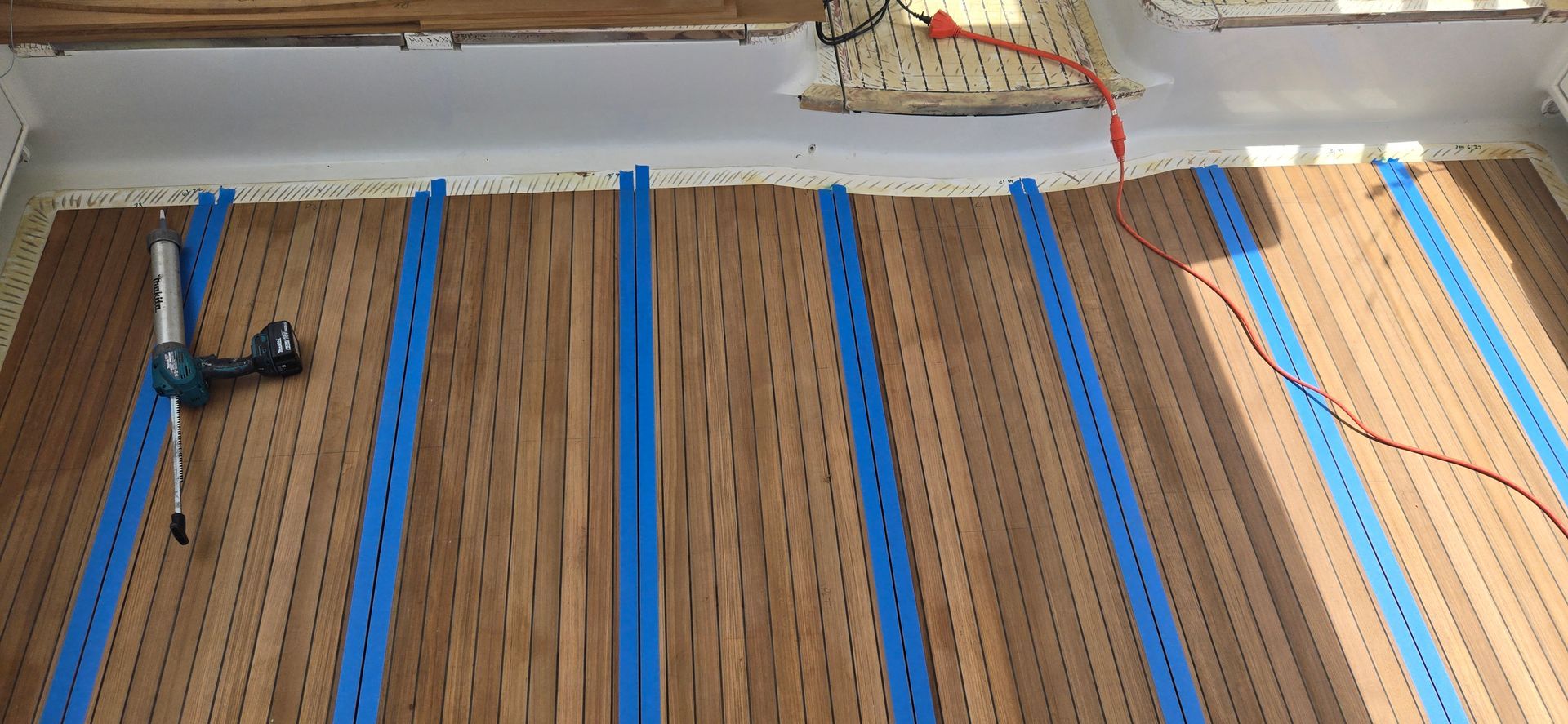How to Clean Teak Decking
At Teakdecking Systems, we replace many teak decks that are damaged by improper maintenance. Remarkably, many of these decks were destroyed not through neglect, but because they were cleaned too often, too thoroughly, or too aggressively. Proper cleaning prevents damage, so read on to learn from the experts how to clean teak decks.
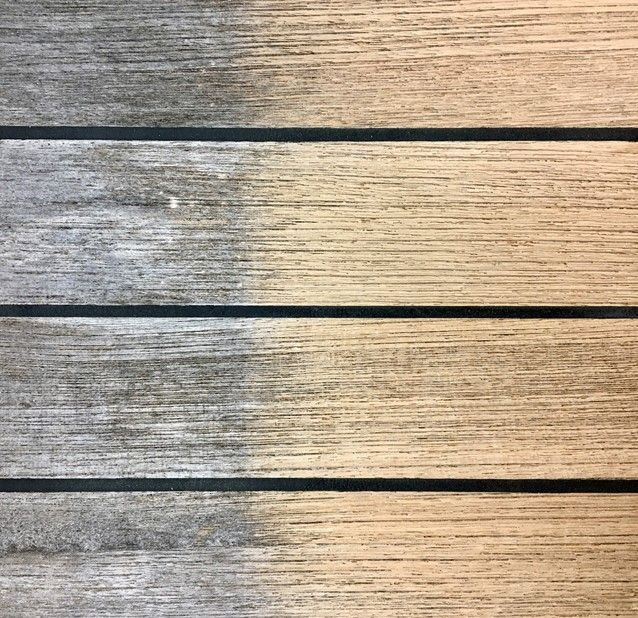
Before & After Cleaning with ECO-Cleaners from Teak Decking Systems
RULE #1
SCRUB ACROSS THE GRAIN
Scrub wood across the grain with a soft scrubbing pad or a soft bristle brush using a gentle cleanser (like ECO-100 or ECO-300 Cleaners), then rinse well with water. Scrubbing with the grain tears teak’s soft grain from the planks, creating a rough surface with ridges in the teak. A rough, weathered deck will collect debris and trap water where mold and mildew can develop.
For large areas, the use of rotary cleaning machines with dispenser tanks and soft bristle brushes is appropriate.
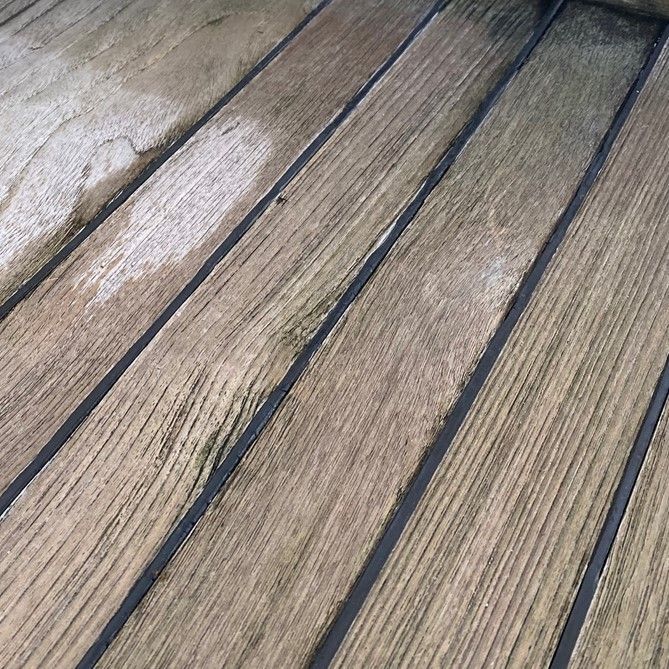
Rough weathered deck with teak ridges (this deck is ready for replacement)
SANDING
Even with proper care, ridges can develop in the wood over time. When this happens, lightly sand the deck to smooth the surface. Furthermore, this will actually increase the life of the deck because a smooth surface prevents the grain from trapping dirt.
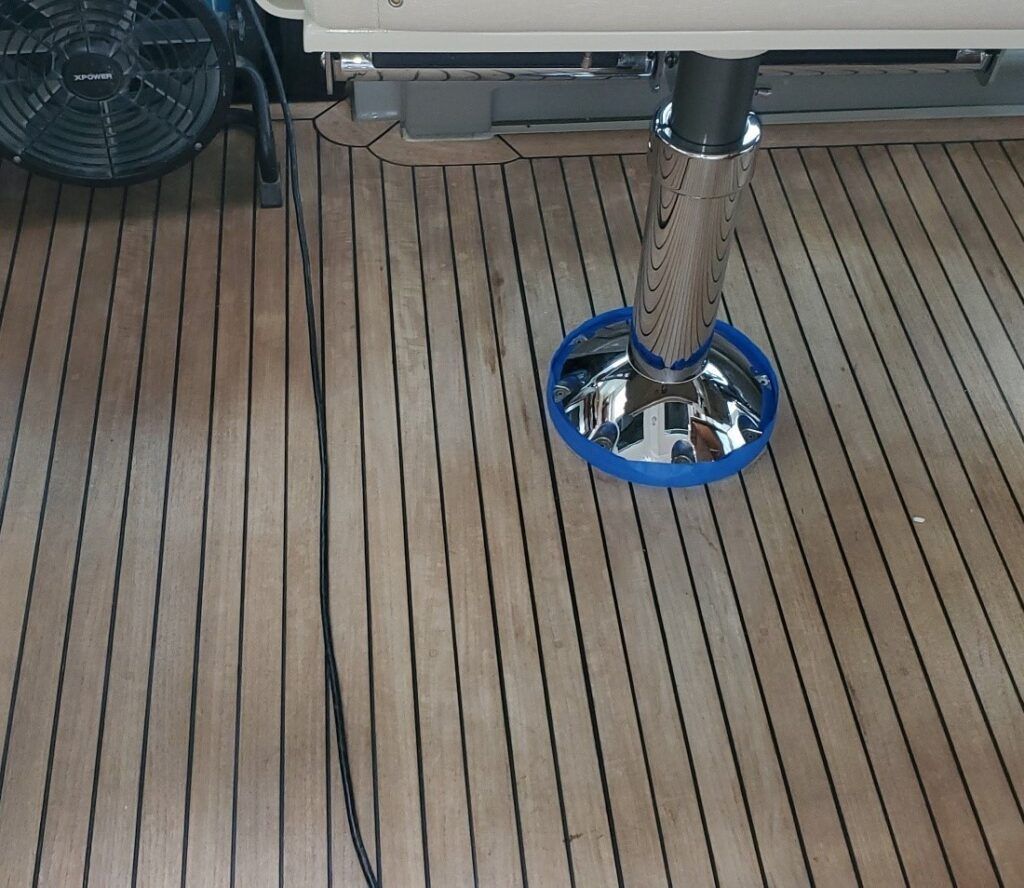
Before Sanding
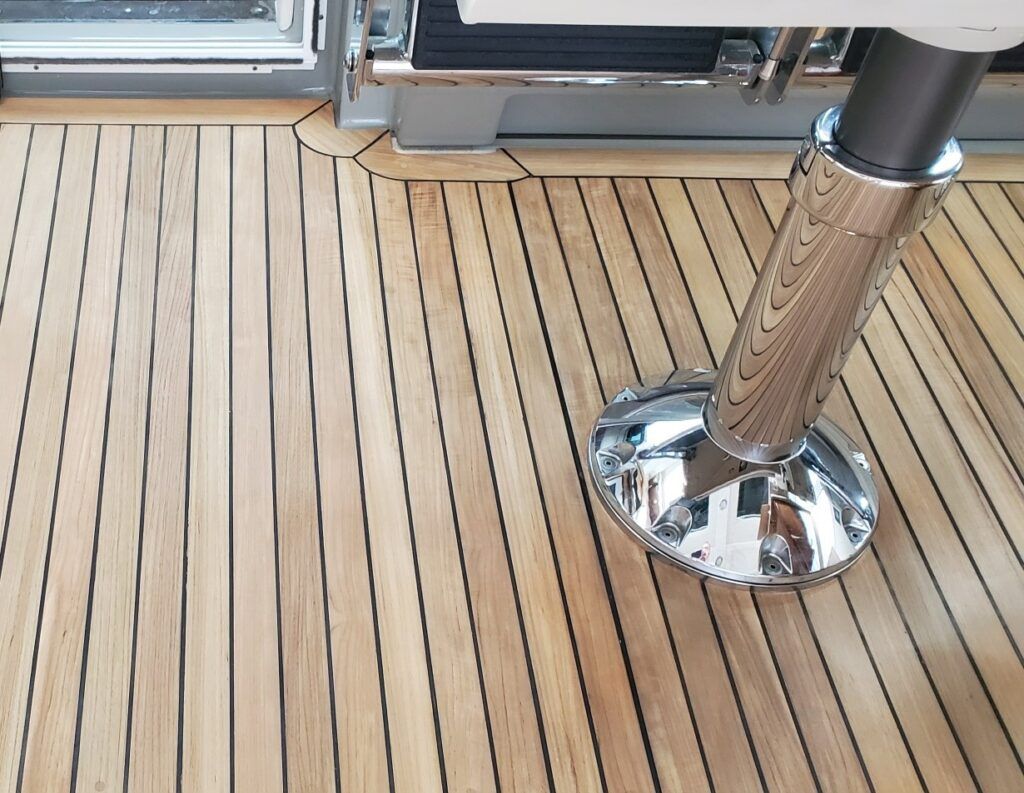
After Sanding
INSPECT THE DECK AFTER CLEANING
After cleaning and flushing the deck, check its condition. Look for any areas that remain wet after the rest of the deck has dried. Wetness may indicate a spot where the caulking in a seam has broken away from the teak, or a plug is failing. If so, repair these areas immediately to prevent water from getting under the deck. Once water is under the teak, a number of consequences can occur.
NOTE: If you can’t make an immediate repair, duct tape the opening to seal it temporarily.
RULE #2
DO NOT USE TWO-PART CLEANERS
UNLESS ABSOLUTELY NECESSARY
Overuse, or improper use, of two-part caustic acid cleaners, shortens the life of teak decks by eating away the teak. Only use these cleaners when everything else has FAILED. Then follow the instructions carefully for the two-part cleaner, and be sure to use personal protective equipment (PPE) to safeguard skin (hands, arms, bare feet, legs) and eyes.
The caustic cleaner will attack surrounding paint, so protect it by wetting down the surfaces before starting and continuing to flush them during the cleaning process. (This is not a 100% guarantee of no paint damage.) Additionally, remember to flush topsides below scuppers and drains to prevent damage to the paint as the deck drains down the side of the hull.
If a two-part cleaner is necessary, be sure to rinse the deck thoroughly. Any remaining cleaner will continue to “eat” the teak and surrounding surfaces. Remember – a two-part cleaner is an acid, and it is not recommended unless necessary.
RULE #3
BE CAREFUL USING CHLORINE BLEACH
Chlorine bleach will attack most caulking products (making them thick and sticky) and will damage seam integrity. However, SIS-440 Teak Deck Caulking is specially formulated for teak decks and is resistant to bleach. For SIS-440, only the top layer of the caulk (the binding layer) will be affected by bleach, creating a black “rub off.” After exposure to bleach, a light sanding of SIS-440 Caulking will restore its normal properties, and the caulking will continue to be UV and chemical resistant.
RULE #4
NEVER, NEVER, NEVER USE A PRESSURE WASHER
Teak is comprised of hard and soft wood. A pressure washer will destroy the soft wood, leaving deep ridges in the deck that will collect water and debris. The life of teak decks is significantly shortened by pressure washers. So, they should never be used.
TEAKDECKING SYSTEMS CLEANERS ARE DEVELOPED
SPECIFICALLY FOR TEAK DECKING
ECO-100 (powder) and ECO-300 (liquid) are gentle, effective cleaners developed specifically for teak decks. They are eco-friendly, acid-free cleaners designed to be thorough, yet gentle. Both the powder and liquid formulations meet the requirements of Florida’s Clean Marina Program and are MARPOL-compliant.
ECO-100 (POWDER)
This concentrated teak cleaner mixes easily with water and contains no acid, caustic sodas or phosphates. It cleans and brightens without removing the soft fibers of teak. It removes mold and mildew and is economical.
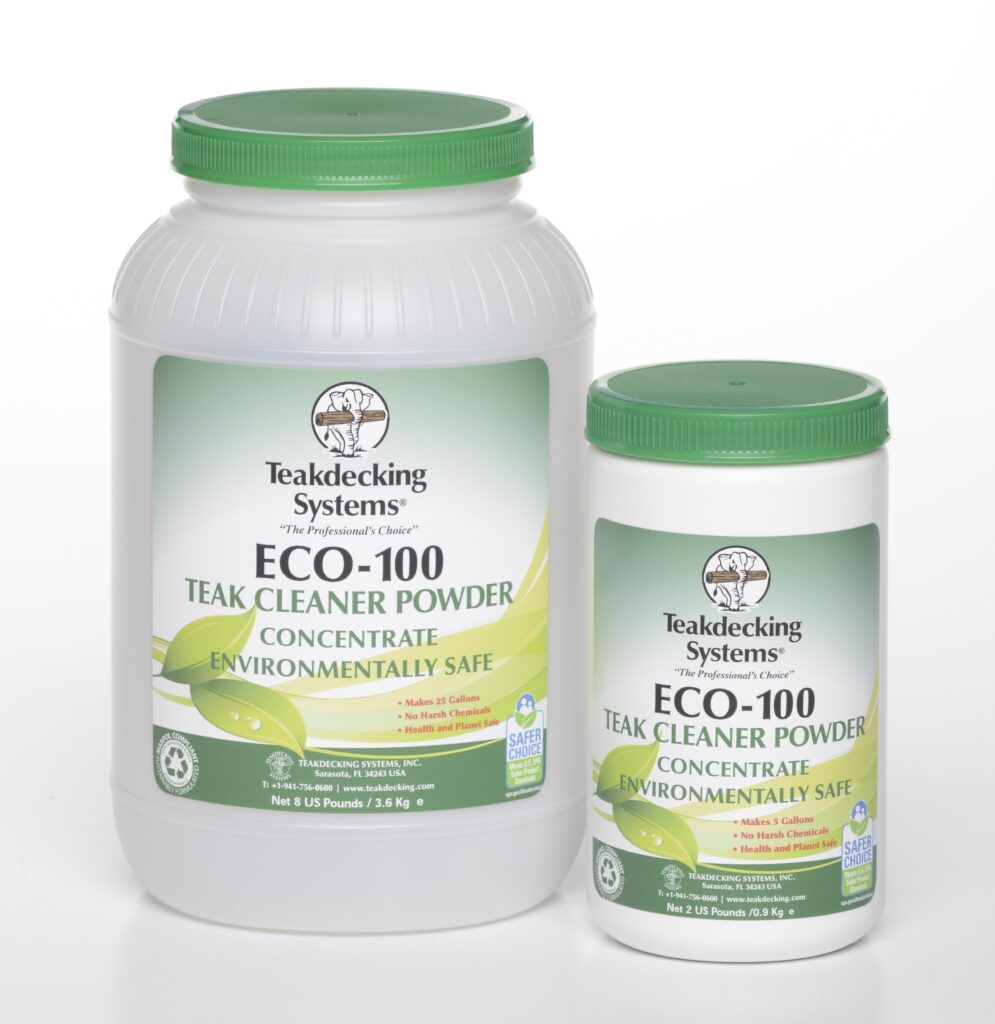
ECO-100 Powder – Mixes Easily with Water
ECO-300 (LIQUID)
This ready-to-use cleaner has the same benefits of ECO-100 but does not need to be mixed with water. It adheres to the scrubbing pad and is ready-to-use. ECO-300 has strong brightening agents that can restore teak to its original color.
USER NOTE: ECO-100 is commonly the first choice for cleaning decks. If a brighter finish is needed, then ECO-300 is used as a second step.
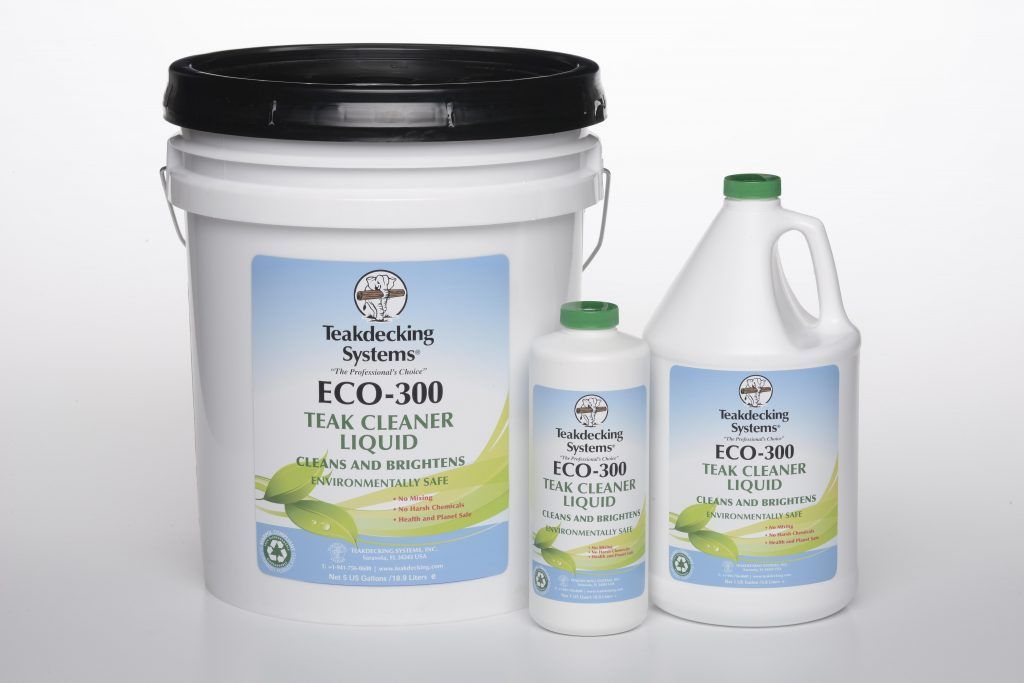
Learn more about teak decking in these articles:
How to Extend the Life of Teak Decking
How to Assess Teak Decking Quality
How to Inspect Teak Deck Caulking and Seams
Watch this video on how to clean teak decking:
QUESTIONS
941-756-0600 and press “1”
ALL PRODUCTS
